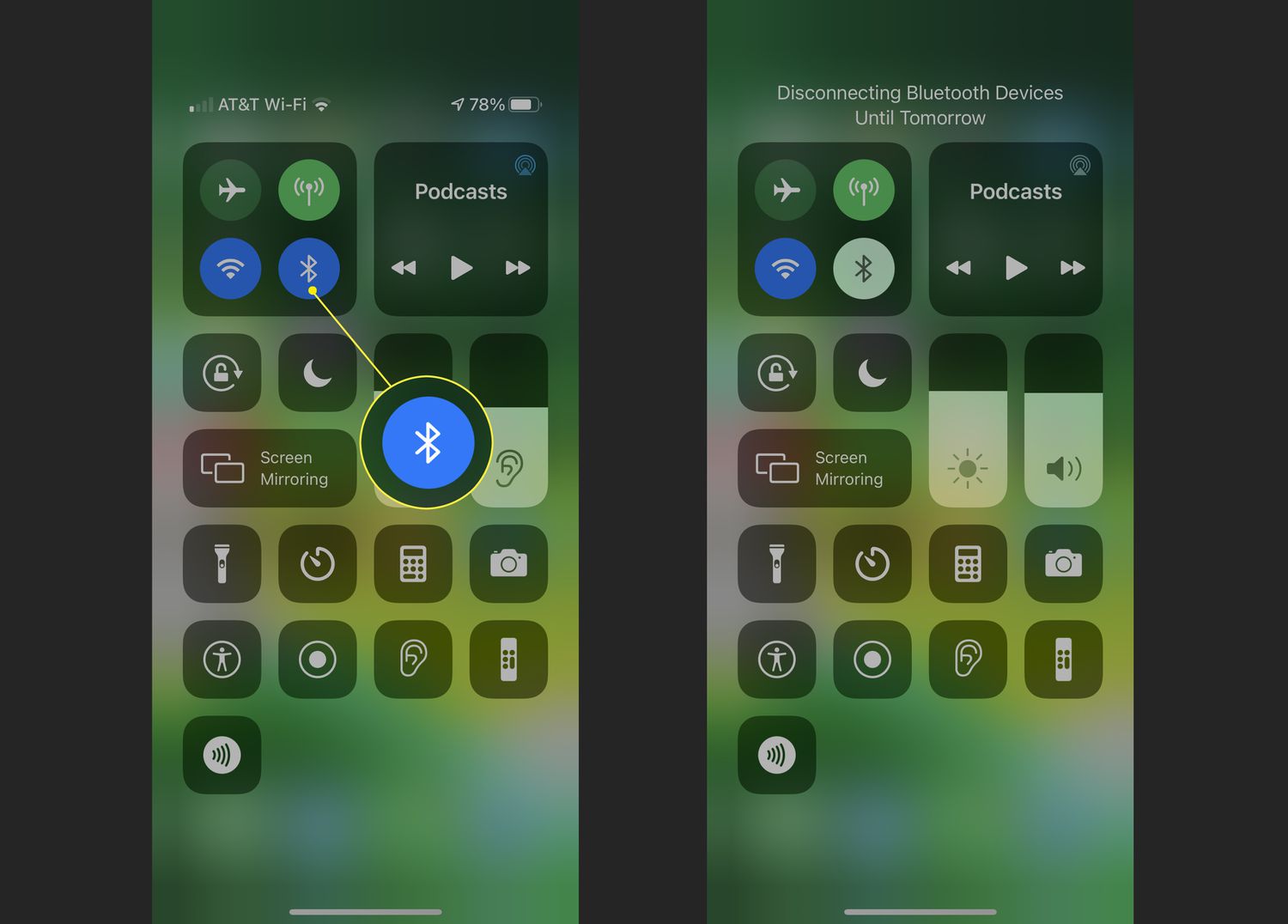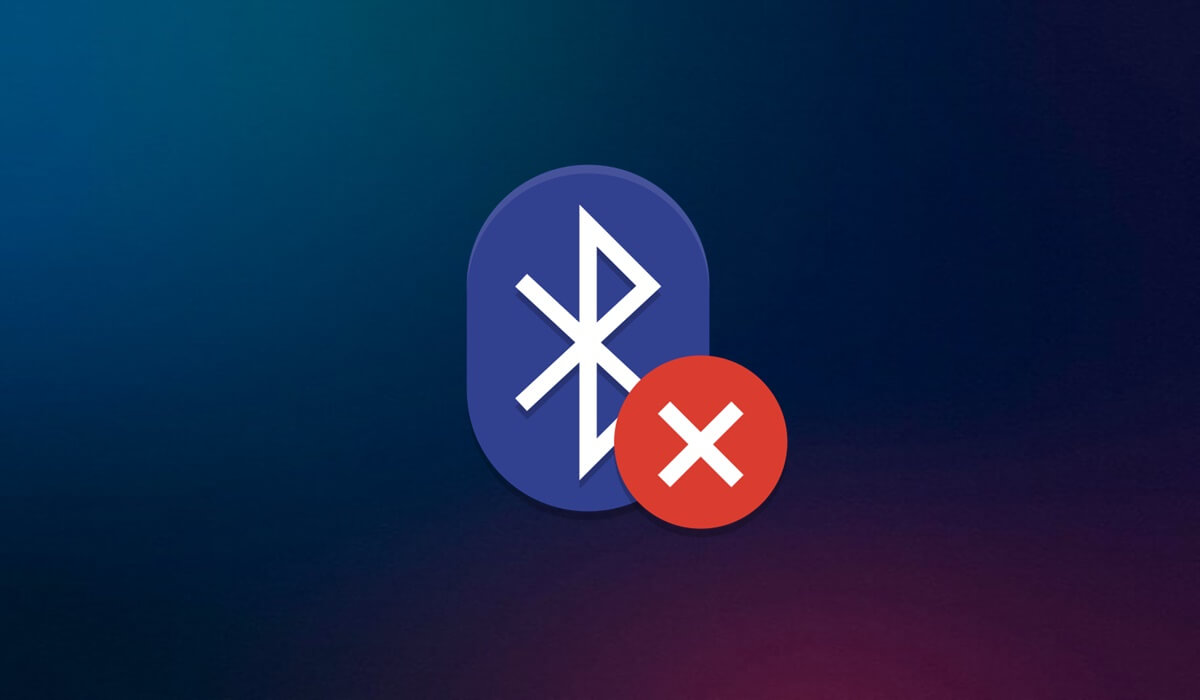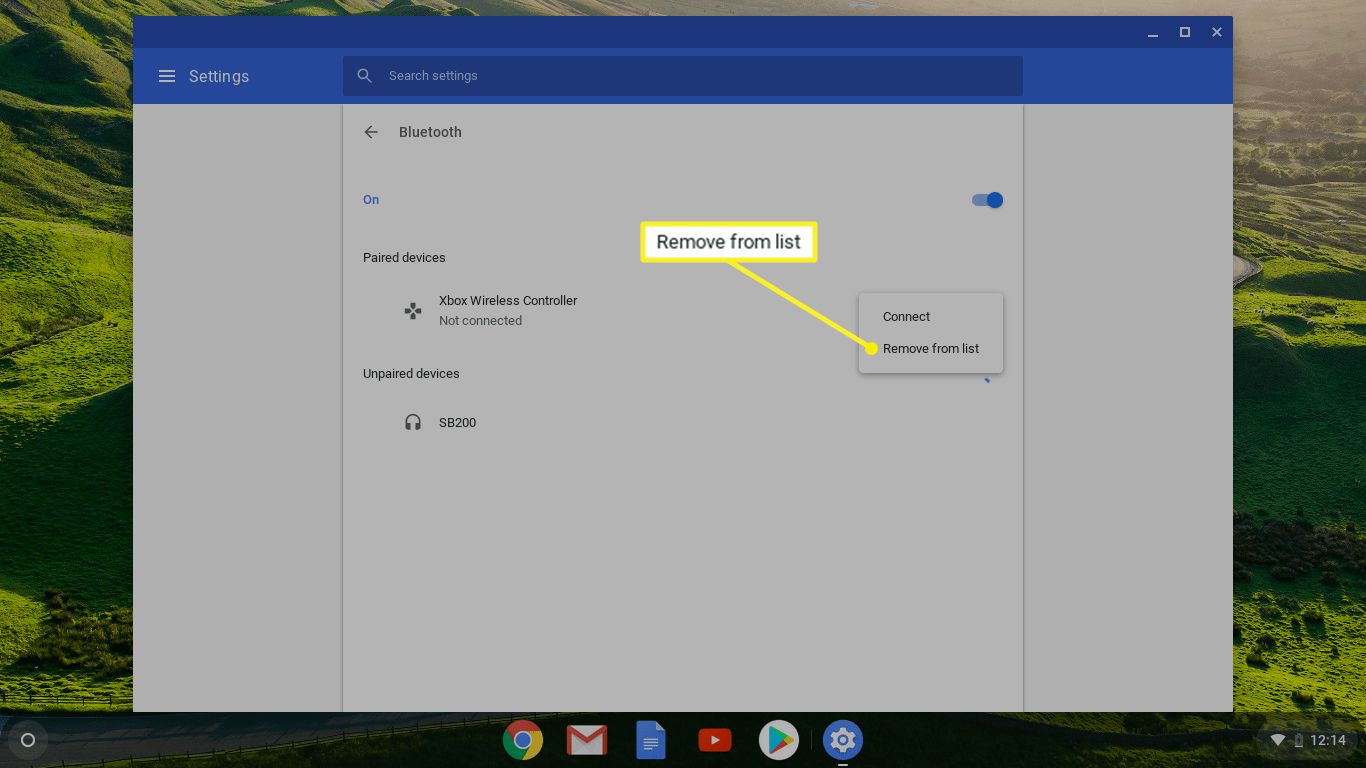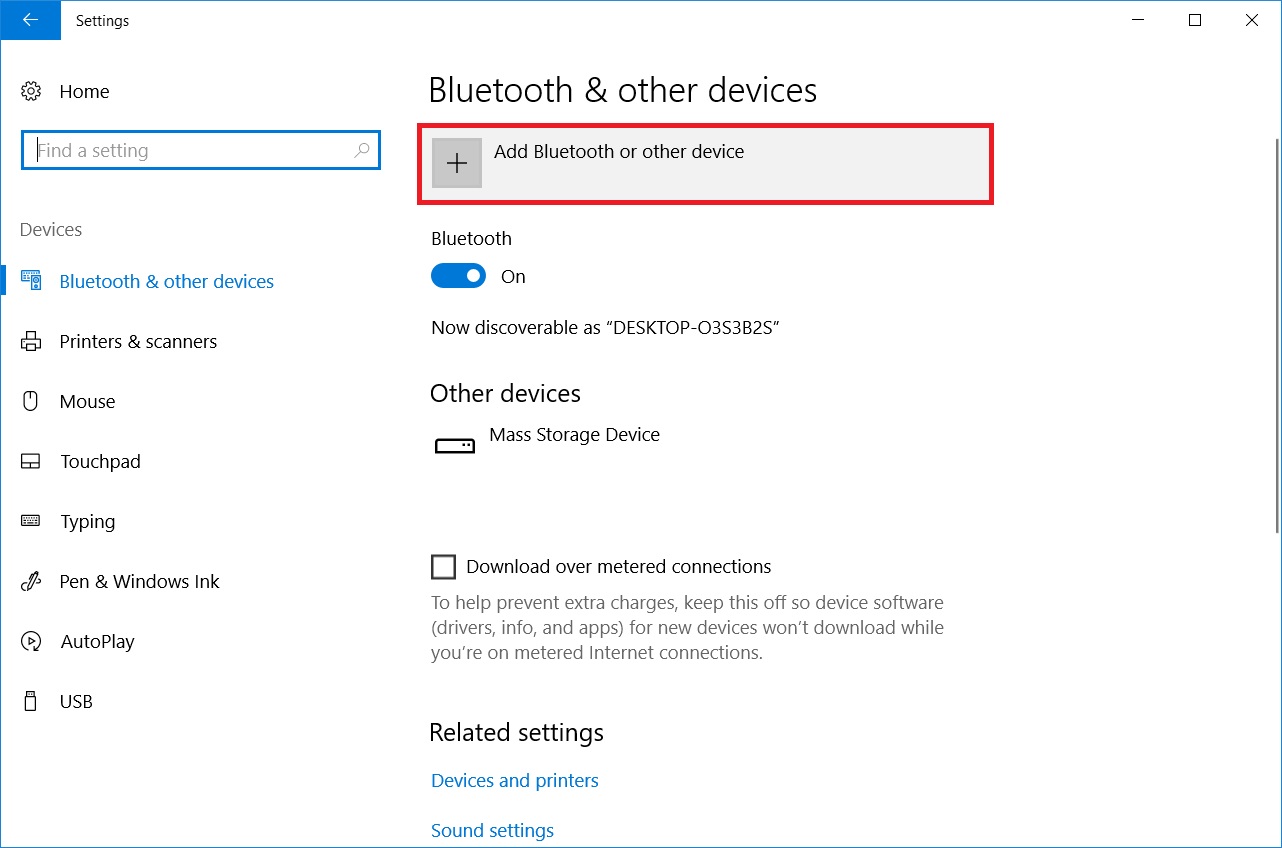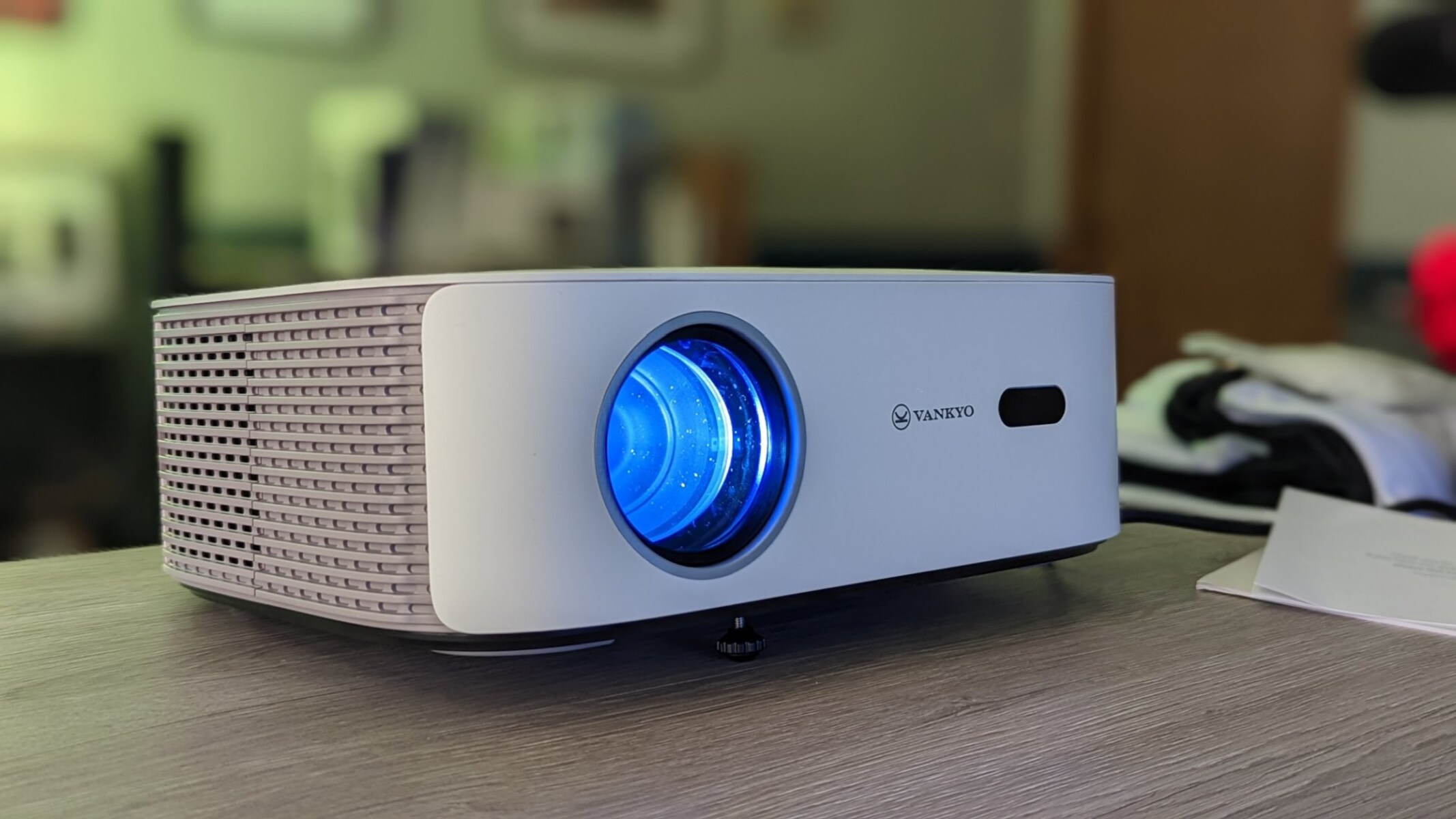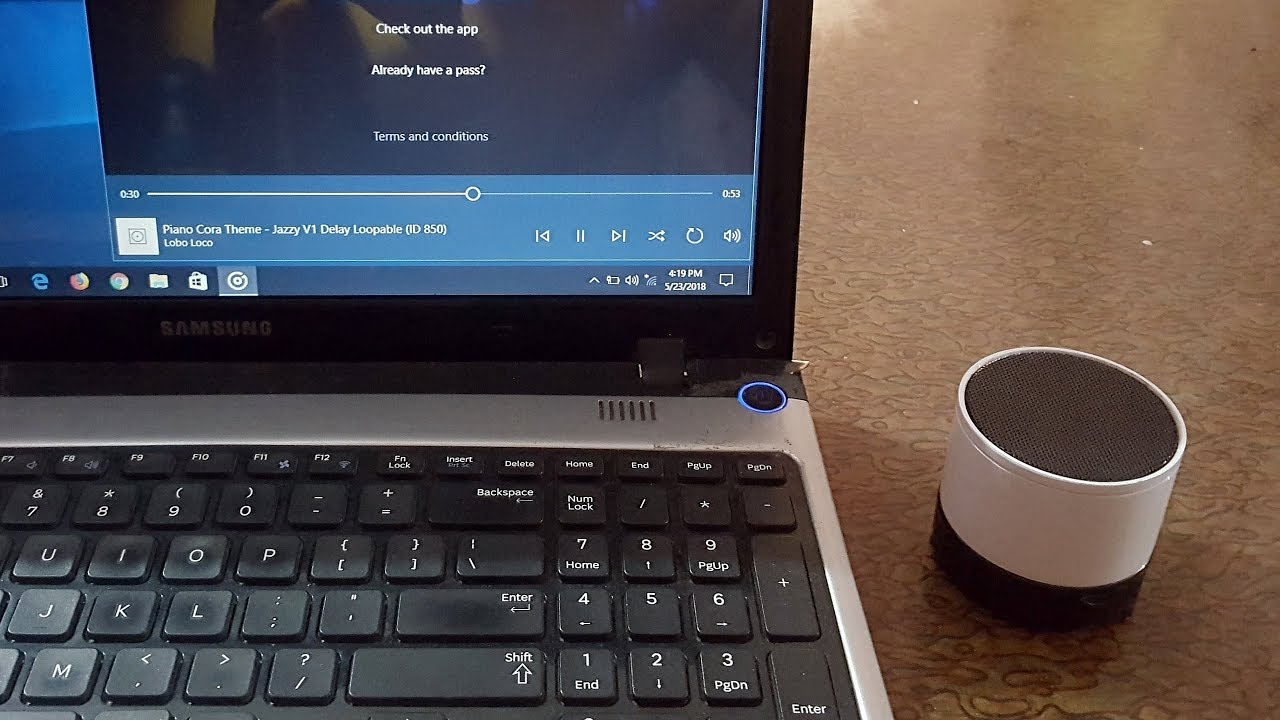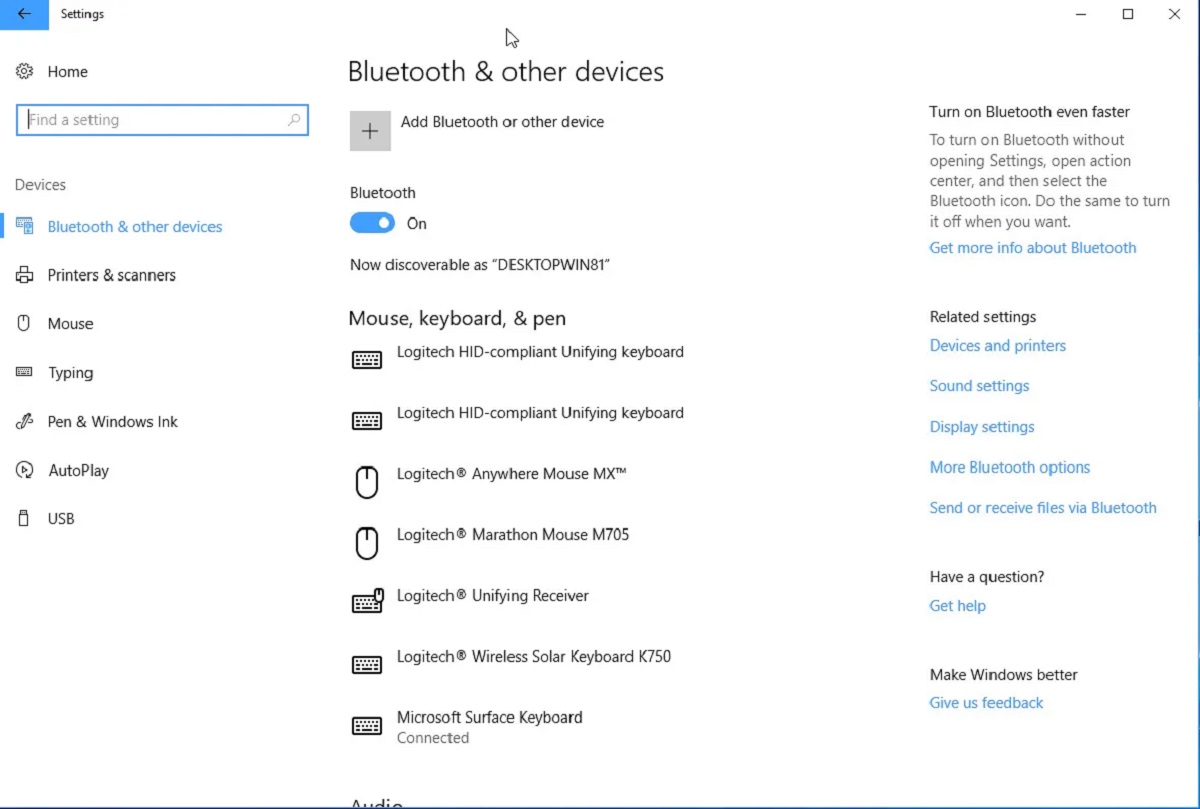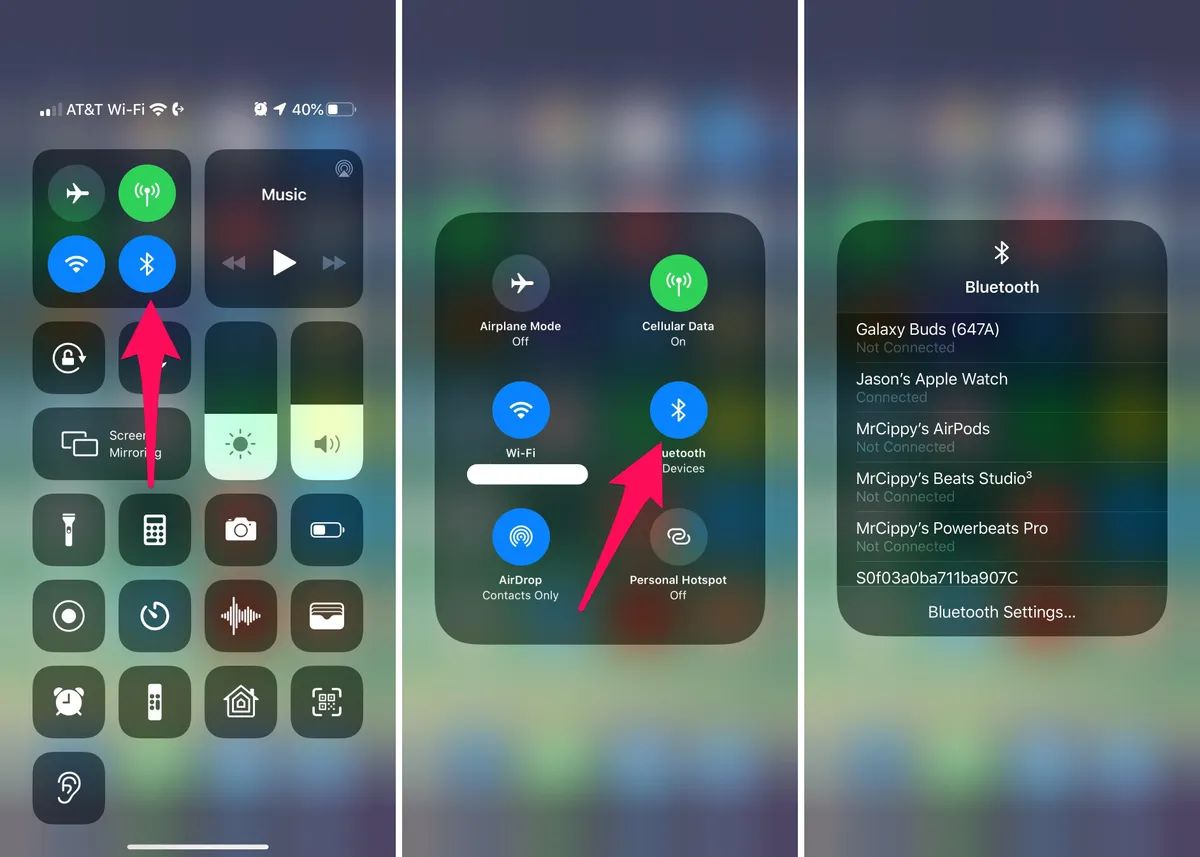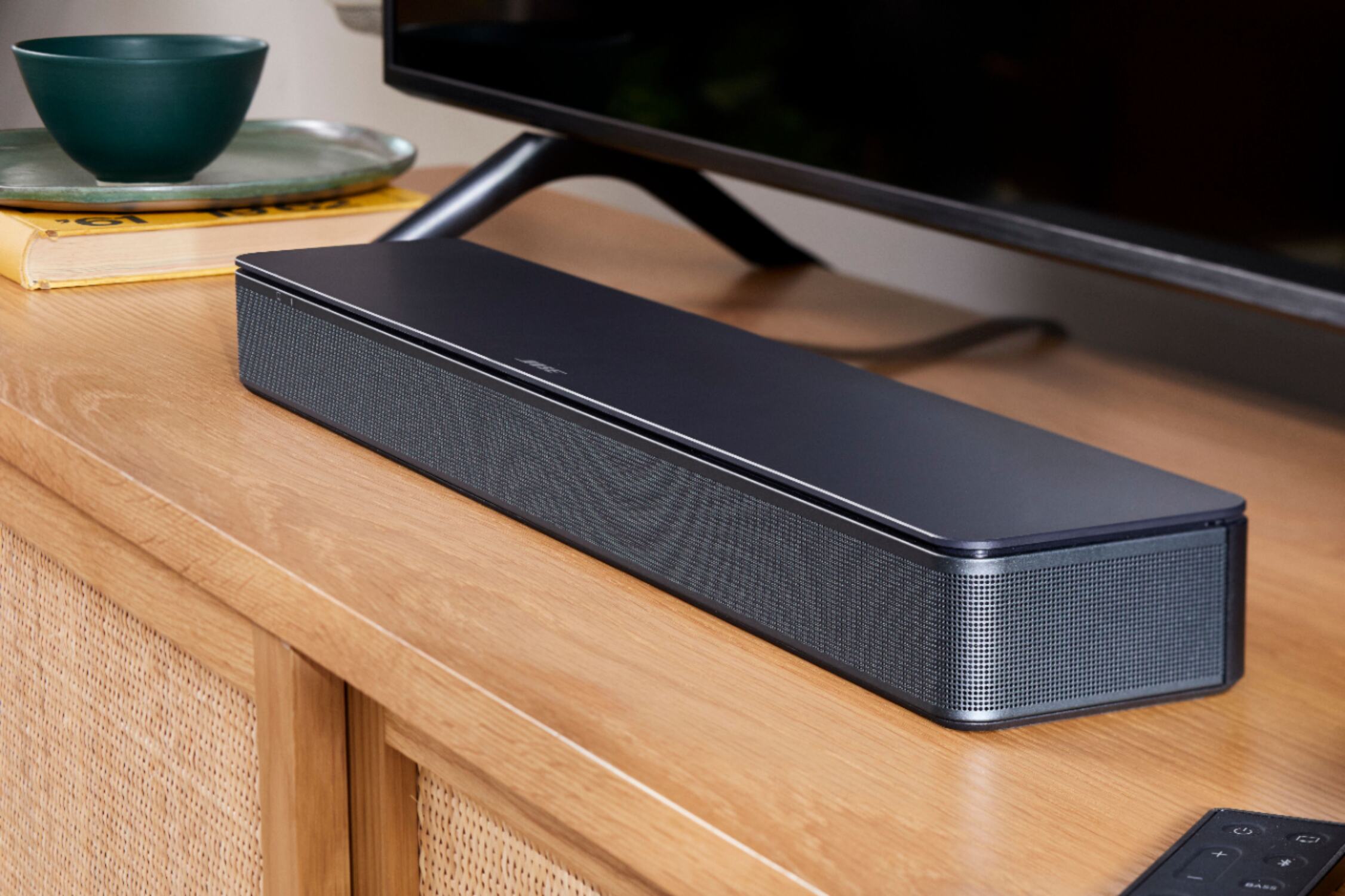Introduction
Welcome to our guide on how to turn Bluetooth on. As technology continues to advance, Bluetooth has become an essential feature on our devices. Whether you’re using a smartphone, tablet, laptop, or desktop computer, chances are you rely on Bluetooth to connect wirelessly to other devices and peripherals.
Bluetooth is a wireless communication technology that allows devices to exchange data over short distances. It eliminates the need for cables and wires, offering convenience and flexibility in connecting devices. From wireless headphones and speakers to keyboards and mice, Bluetooth enables seamless connectivity between different gadgets.
In this article, we will explore the process of turning Bluetooth on for various devices, including Android and iOS smartphones, Windows and macOS computers. We will also provide troubleshooting tips for some common Bluetooth issues that users may encounter.
Why would you need to turn Bluetooth on? Well, there are several reasons. Firstly, it allows you to connect and pair your device with other Bluetooth-enabled devices. This is particularly useful when you want to use wireless headphones for a hands-free audio experience, or when you want to transfer files between devices without the hassle of cables.
Additionally, turning Bluetooth on also enables you to connect to external peripherals such as keyboards or speakers, making your device more versatile and adaptable to different situations.
What is Bluetooth?
Bluetooth is a wireless communication technology that enables devices to connect and exchange data over short distances. It was first introduced in the early 1990s by a consortium of technology companies, including Ericsson, IBM, Intel, Nokia, and Toshiba.
The name “Bluetooth” originates from the 10th-century Danish king, Harald Bluetooth, who was known for his ability to unite people and nations. The creators of Bluetooth saw this technology as a way to bring different devices together and create a seamless connection.
Bluetooth uses radio waves to establish a secure wireless connection between devices, operating on the 2.4 GHz frequency band. It supports a range of up to 100 meters, although the actual range may vary depending on the device and environmental factors.
One of the key features of Bluetooth is its ability to connect multiple devices simultaneously. This is made possible by a technology called frequency-hopping spread spectrum, which allows Bluetooth to avoid interference from other wireless devices operating on the same frequency.
Bluetooth is widely used for various purposes, including audio streaming, file transfer, and device control. It has become the standard for wireless headphones, speakers, keyboards, mice, and other peripherals.
Over the years, Bluetooth technology has evolved to offer improved data transfer speeds, enhanced power efficiency, and increased range. The latest version of Bluetooth, Bluetooth 5.2, introduced in 2020, offers even faster speeds and better support for audio and IoT devices.
Bluetooth has become an integral part of our daily lives, enabling us to connect and interact with devices seamlessly. Whether you’re listening to music, making hands-free calls, or connecting to smart home devices, Bluetooth provides a convenient and reliable wireless connection.
Why would I need to turn Bluetooth on?
Turning Bluetooth on offers a wide range of benefits and opportunities for device connectivity and functionality. Here are some common reasons why you might need to turn Bluetooth on:
- Wireless audio: One of the main reasons to turn Bluetooth on is to enjoy wireless audio. By connecting your device to Bluetooth headphones, speakers, or earbuds, you can listen to music, podcasts, or make phone calls without the hassle of tangled wires.
- Peripheral devices: Bluetooth enables you to connect peripheral devices like keyboards, mice, and game controllers to your device wirelessly. This is particularly useful if you want to work more comfortably, play games, or navigate your device with ease.
- File sharing: When Bluetooth is turned on, you can easily share files between devices without relying on an internet connection or a physical connection like USB cables. This makes it convenient for transferring photos, videos, documents, and other files between smartphones, tablets, and computers.
- Tethering: Bluetooth tethering allows you to share your device’s internet connection with other devices. This can be beneficial when you’re in a location without Wi-Fi and want to connect your laptop or tablet to the internet using your smartphone’s data plan.
- Smart home integration: Many smart home devices, such as lights, thermostats, and security systems, can be controlled using Bluetooth. By turning Bluetooth on, you can easily connect and manage these devices from your smartphone or other compatible devices.
- Hands-free features: With Bluetooth enabled, you can take advantage of hands-free features like making calls or using voice commands without physically interacting with your device. This adds convenience and safety while driving or performing other activities that require your full attention.
These are just a few examples of why you might need to turn Bluetooth on. The versatility and convenience of Bluetooth technology make it an invaluable feature for seamless device connectivity and enhanced functionality in various aspects of our daily lives.
How to turn Bluetooth on on Android devices
Enabling Bluetooth on your Android device is a straightforward process. Follow the steps below to turn Bluetooth on:
- Open the “Settings” app on your Android device. You can usually find the Settings app in the app drawer or by swiping down from the top of the screen and tapping on the gear icon.
- In the Settings menu, scroll down and tap on “Connections.”
- Next, tap on “Bluetooth.”
- Toggle the switch next to Bluetooth to turn it on. You may see a prompt asking for permission, such as allowing your device to find and be found by nearby devices. Tap on “OK” or “Allow” to proceed.
- Your Android device is now discoverable by other Bluetooth devices, and you can start pairing and connecting to them.
Note that the exact steps may vary slightly depending on your Android device’s manufacturer and the version of the operating system you are using. However, the general process for turning Bluetooth on remains consistent across most Android devices.
To pair and connect your Android device with a Bluetooth accessory, ensure that the accessory is in pairing mode (consult the device’s user manual for instructions) and navigate to the Bluetooth settings on your device. Tap on the name of the accessory when it appears in the list of available devices, and follow any additional prompts to complete the pairing process.
Once paired, your Android device will remember the connection, and you can enjoy the benefits of using the Bluetooth accessory with your device.
How to turn Bluetooth on on iOS devices
If you’re using an iOS device, such as an iPhone or iPad, the process of turning Bluetooth on is simple. Follow the steps below:
- Open the “Settings” app on your iOS device. You can find the Settings app on your home screen; it is represented by a gear icon.
- In the Settings menu, tap on “Bluetooth.”
- On the Bluetooth screen, toggle the switch next to Bluetooth to turn it on. The switch will turn green when Bluetooth is enabled.
- Your iOS device is now discoverable by other Bluetooth devices, and you can begin pairing and connecting to them.
Similar to Android devices, please note that the exact steps might differ slightly based on the model of your iOS device and the version of the operating system you’re using. However, the general process of enabling Bluetooth remains consistent across iOS devices.
To pair and connect your iOS device with a Bluetooth accessory, make sure the accessory is in pairing mode (refer to the device’s user manual for specific instructions). Then, on your iOS device, go to the Bluetooth settings, and you should see the name of the accessory listed under “Devices.” Tap on the accessory’s name, and follow any additional prompts or instructions to complete the pairing process.
Once paired, your iOS device will remember the connection, and you can now enjoy using the Bluetooth accessory with your device.
How to turn Bluetooth on on Windows devices
If you’re using a Windows device, whether it’s a laptop or desktop computer, turning Bluetooth on is a straightforward process. Here’s how you can do it:
- Click on the “Start” button located at the bottom left corner of your screen, and then click on the “Settings” gear icon.
- In the Settings menu, click on “Devices.”
- In the Devices menu on the left sidebar, click on “Bluetooth & other devices.”
- In the Bluetooth & other devices settings, toggle the switch next to Bluetooth to turn it on. The switch will slide to the right when Bluetooth is enabled, and a message will appear saying “Your device is now discoverable to other devices nearby.”
- Your Windows device is now ready to be paired and connected to other Bluetooth devices.
Keep in mind that the exact steps may vary slightly depending on the version of Windows you are using. However, the basic process for enabling Bluetooth on Windows devices remains consistent across different versions.
To pair and connect your Windows device with a Bluetooth accessory, make sure the accessory is in pairing mode (refer to the device’s user manual for specific instructions). Then, in the Bluetooth & other devices settings, click on the “Add Bluetooth or other device” button, select the type of device you want to connect (e.g., Bluetooth speaker or headphones), and follow the on-screen instructions to complete the pairing process.
Once paired, your Windows device will remember the connection, and you can now enjoy the benefits of using the Bluetooth accessory with your computer.
How to turn Bluetooth on on macOS devices
If you’re using a macOS device, such as a MacBook or iMac, enabling Bluetooth is a quick and simple process. Follow the steps below to turn Bluetooth on:
- Click on the Apple menu in the top-left corner of your screen and select “System Preferences.”
- In the System Preferences window, click on “Bluetooth.”
- On the Bluetooth preferences panel, ensure that the “On” button is selected to enable Bluetooth.
- Your macOS device is now discoverable by other Bluetooth devices, and you can begin pairing and connecting to them.
It’s worth noting that the exact steps might vary slightly depending on the version of macOS you’re using. However, the general process of turning Bluetooth on remains consistent across macOS devices.
To pair and connect your macOS device with a Bluetooth accessory, make sure the accessory is in pairing mode (check the device’s user manual for specific instructions). Then, on the Bluetooth preferences panel, simply click on the “+” button to search for and select the accessory you want to connect. Follow any additional prompts or instructions to complete the pairing process.
Once paired, your macOS device will remember the connection, and you can enjoy using the Bluetooth accessory with your computer.
Troubleshooting common Bluetooth issues
While Bluetooth technology offers convenience and seamless connectivity, it is not immune to issues that may arise. Here are some common Bluetooth problems you may encounter and troubleshooting tips to resolve them:
- Connection issues: If you’re having trouble connecting your device to a Bluetooth accessory, make sure both devices are in pairing mode and within close proximity to each other. You can also try turning Bluetooth off and on again on both devices to reset the connection. If the problem persists, try restarting your device and the Bluetooth accessory.
- Poor audio quality: If you experience choppy or distorted audio when using Bluetooth headphones or speakers, ensure that there are no obstacles or interference between your device and the accessory. Additionally, make sure both the device and the accessory have sufficient battery levels. If the issue persists, try unpairing and repairing the devices or updating their firmware.
- Bluetooth not working: If Bluetooth is not working at all on your device, the first step is to check if Bluetooth is enabled in the settings. If it’s enabled but still not functioning, try restarting your device and checking for software updates. In some cases, a software update may fix any bugs or compatibility issues that could be causing the problem.
- Device not recognized: If your Bluetooth accessory is not being recognized by your device, ensure that it is in pairing mode and within the supported range. Restart your device and try pairing again. If the problem persists, try unpairing all connected devices and starting the pairing process from scratch.
- Battery drain: Bluetooth can consume significant battery power, especially if it’s constantly searching for nearby devices. To conserve battery life, consider disabling Bluetooth when it’s not in use or using the “Low Power Mode” feature (available on some devices) to limit Bluetooth functionality.
If the above troubleshooting steps do not resolve your Bluetooth issues, it is advisable to consult the user manual of your device or contact the manufacturer’s support for further assistance. They may provide specific instructions or firmware updates to address the problem.
Remember, Bluetooth connectivity can vary depending on device compatibility, wireless range, and environmental interference. However, with patience and persistence, most Bluetooth issues can be resolved, allowing you to enjoy the benefits of wireless connectivity.
Conclusion
Bluetooth technology has revolutionized the way we connect and interact with our devices. Whether you’re using an Android, iOS, Windows, or macOS device, turning Bluetooth on is a simple process that opens up a world of possibilities for wireless connectivity.
In this guide, we have provided step-by-step instructions on how to turn Bluetooth on for various devices. From smartphones to computers, enabling Bluetooth allows you to connect wirelessly to accessories like headphones, speakers, keyboards, and more.
We have also discussed common Bluetooth issues and provided troubleshooting tips to help you overcome them. Remember to check for compatibility, ensure devices are in pairing mode, and reset connections if necessary. Sometimes, a simple restart or software update can resolve Bluetooth problems.
Bluetooth technology continues to evolve, with each iteration improving data transfer speeds, power efficiency, and range. It has become an integral part of our daily lives, allowing us to enjoy wireless audio, convenient file sharing, hands-free functionality, and smart home integration.
As you navigate the world of Bluetooth connectivity, keep in mind that the specific steps may vary slightly based on your device and operating system version. Always refer to the user manual or consult manufacturer support for detailed instructions tailored to your specific device.
Whether you’re pairing your Bluetooth headphones for a workout, connecting your smartphone to a car’s audio system, or sharing files between devices, Bluetooth offers convenience, flexibility, and a seamless wireless experience.
Now that you have the knowledge and tools to turn Bluetooth on for your devices, go ahead and explore the limitless possibilities that wireless connectivity brings!







